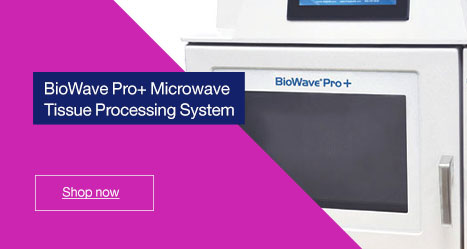Oil immersion objectives are commonly found on most research-grade microscopes (usually 63X or 100X magnification). Immersion objectives increase the resolution of the microscope and increase the numerical aperture (NA) of the lens used (as I alluded to in my previous article).
Immersing and dipping
There is another less-common immersion objective found on research-grade inverted microscopes (and usually confocal microscopes). This is the ‘water-immersion’ objective, usually abbreviated as ‘WI’ on the barrel of the objective. The water immersion objective really comes into its own when imaging live cells in a cellular medium. There are actually two different types of water immersions objectives- ‘water immersion’ and ‘water dipping’ (usually abbreviated as ‘WD’ on the barrel of the objective and not to be confused with Working Distance). Water immersion objectives are used in a manner similar to oil immersion objectives, albeit with a drop of water in place of the oil. The water dipping objectives are more often used with an upright configuration and the nose cones (which are usually constructed from an inert material such as ceramics) are dipped directly into a medium or buffer to image cells or tissue. Consequently, the dipping objectives have a very long working distance (see my article entitled ‘Looking Down and Through. Microscope Optics 3: Oil Immersion Objectives’).
Regardless of the nature of the immersion medium, the main purpose is to increase the resolution using an immersion medium with a higher refractive index than air. This resolving power can increase the NA of the objective which in turn produces more detailed, sharper and brighter images.
Oil immersion objectives (and the oil itself) can often produce optical artefacts including spherical aberrations. These aberrations are caused by the lens curvature meaning the parallel light waves coming through and from the specimen are not focussed to a single point of light (for more information on objective aberrations, please read my previous blog post entitled ‘Looking Down and Looking Through: The Optics of a Microscope 2: The Objectives’).
Advantages and disadvantages
One of the main advantages of using water immersion objectives is the simple fact that water is used as the immersion medium. Easy to apply, easy to wipe off (as opposed to immersion oil which seems to get absolutely everywhere, especially in shared facilities!). However, there are some disadvantages with a water immersion objective. The oil immersion objectives are able to achieve a higher resolution compared to their aqueous counterparts. Immersion oils have a refractive index around 1.51, whereas water has a refractive index of 1.33. Due to the viscosity of water versus oil, the use of water immersion objectives can be susceptible to air movements and environmental vibrations. This can be overcome by ensuring the microscope is placed on an anti-vibration table, or, more simply (and cheaply), special rings are available which sit around the nose cones of the objectives which create a small pool of water. Finally, the cost! Water immersion objectives are not cheap especially when compared to the more common oil immersion alternatives. Some water immersion objectives are more expensive than complete research-grade microscopes.
Live cell imaging
The overall advantage of water immersion objectives comes when viewing live cells. When viewing live cells using a microscope, the cells are usually within a chamber which contains medium or buffer. Although this ensures that the cells are kept within a stable environment for the duration of the experiment, it means that the focal point (where the cells or tissue are in sharp focus) is some distance away from the objective front lens. Oil immersion objectives have a relatively short working (focal) distance and as such, are not suited for viewing deep through any chambers and medium which the cells may be in. As everyone knows, oil and water don’t mix either! Using an oil objective to view into an aqueous medium adds yet another problem of refraction as the refractive indices of oil and water are different. Differences in the refractive indices of the specimen, the aqueous medium and the plastic container holding the cells is such that at each of these different interfaces, the light from the specimen is refracted at each stage leading to spherical aberrations as mentioned previously. Although the oil immersion objectives tend to have a higher (theoretical) NA than water objectives, this is not always achievable. Admittedly, refraction can occur at the water/glass or plastic interfaces, however, the water immersion objectives are corrected for this. Many of the water immersion objectives have a built in correction collar. This ring around the objective barrel can be adjusted to suit different thicknesses of cover glass/chamber.
Confocal imaging
Finally, for confocal imaging of live cells, the water immersion objectives are invaluable and are usually one of the standard features of a confocal system. They are designed to optically penetrate deep into cells or tissue and are able to provide greater resolution when using aqueous fluids such as cell culture medium. In addition, as water is less viscous than oil, there will be less surface tension at the coverslip which in turn means less potential for disrupting or displacing of your specimen. This is particularly important when acquiring Z-stacks or when carrying out scanning experiments.
AUTHOR: Martin Wilson


